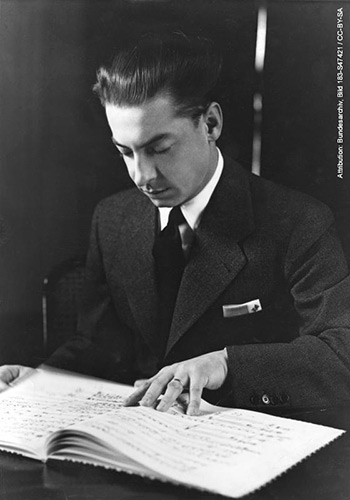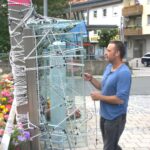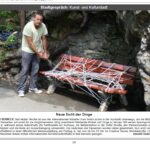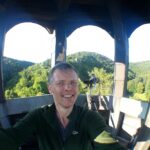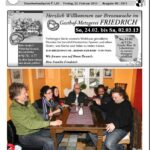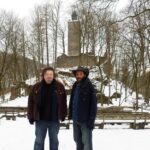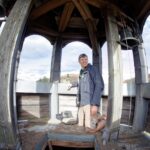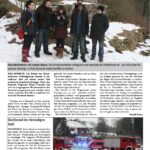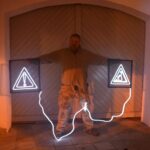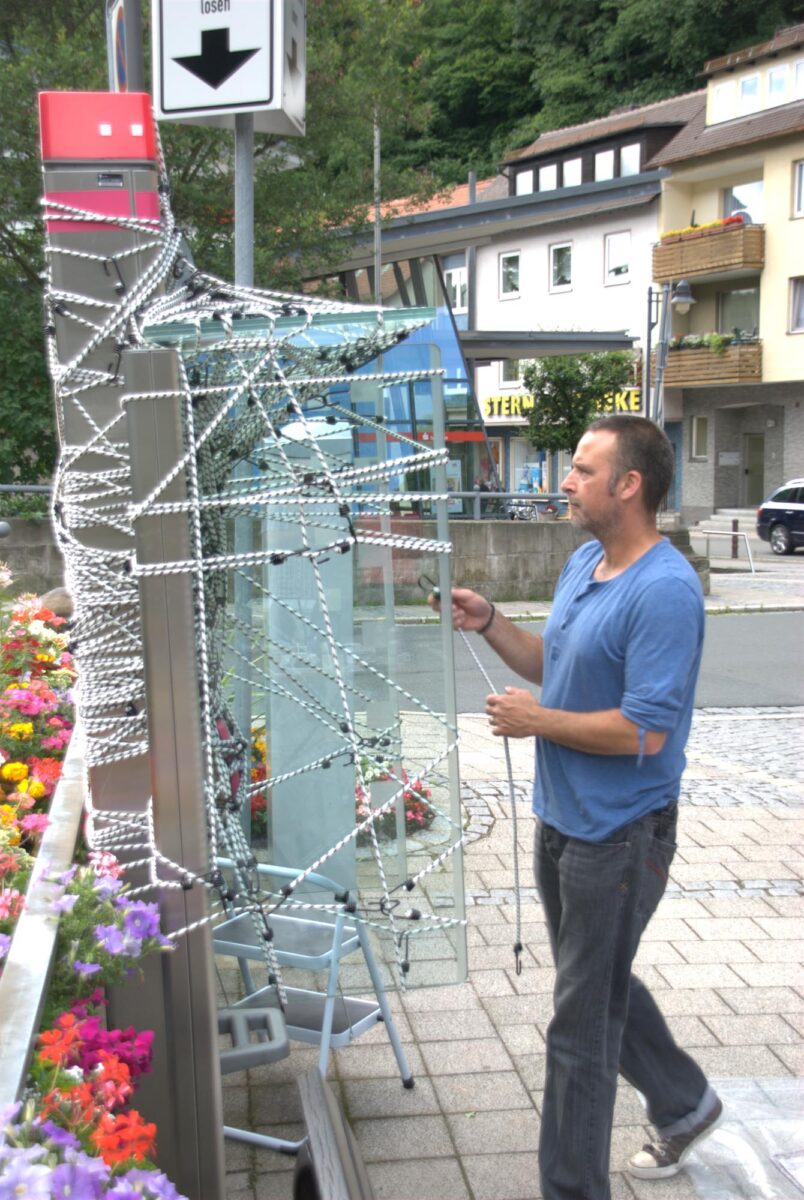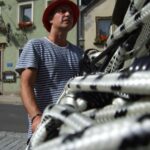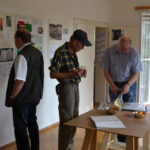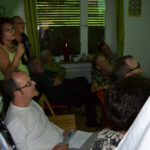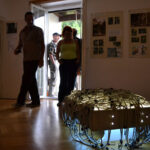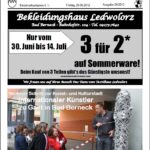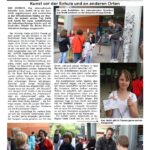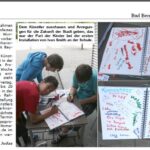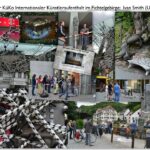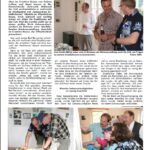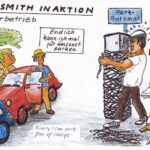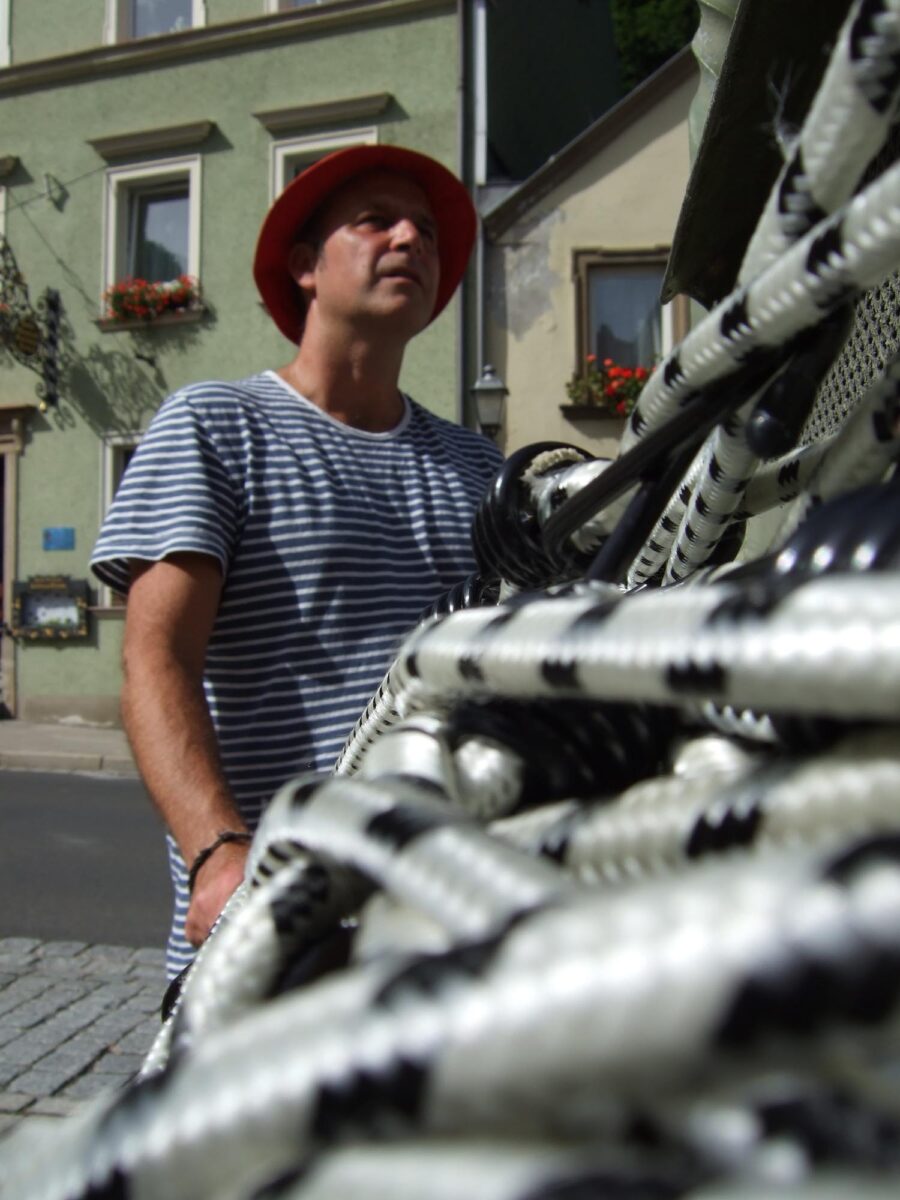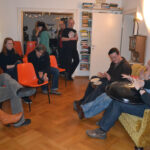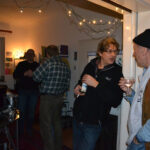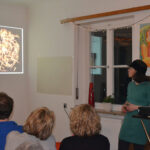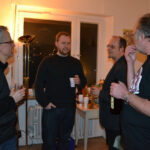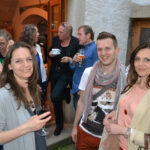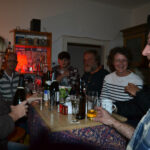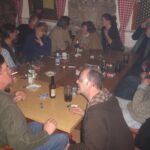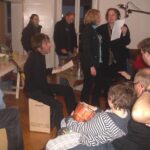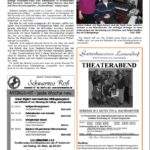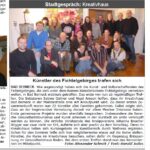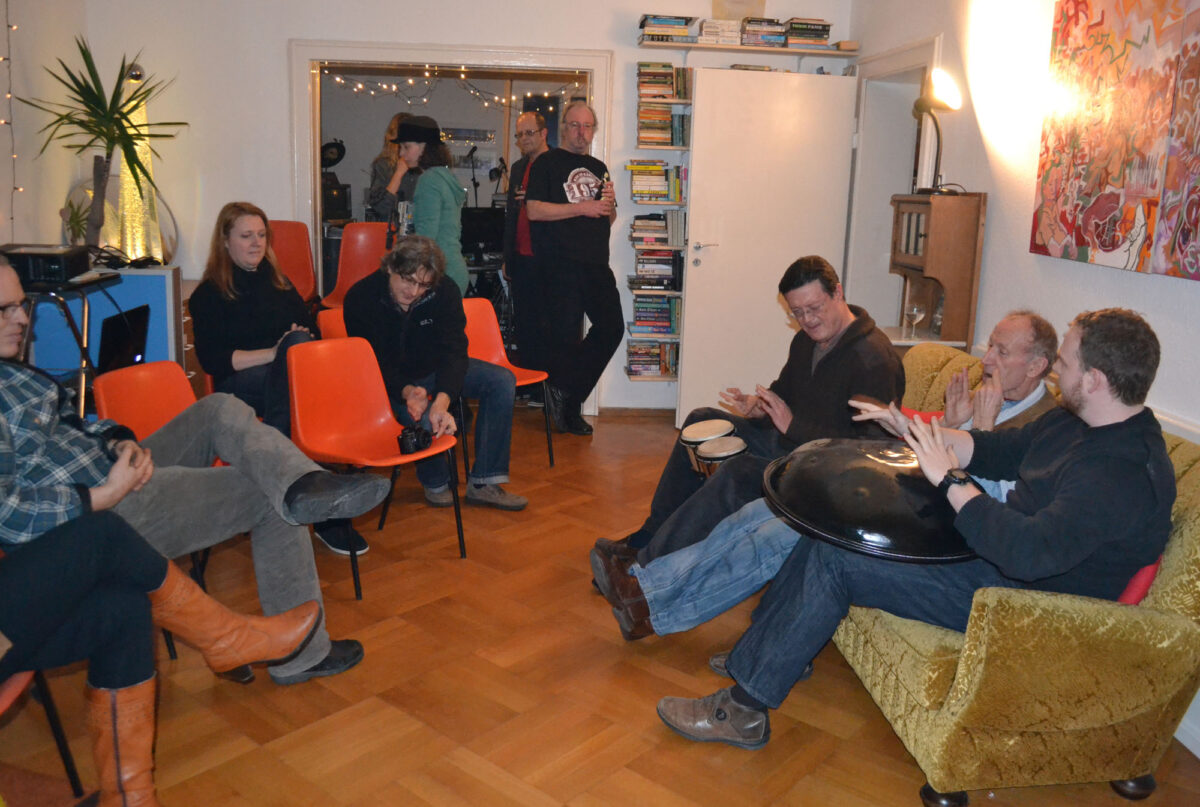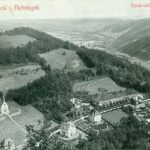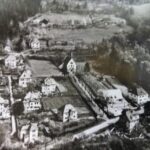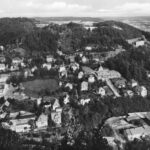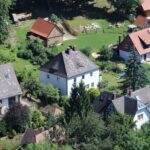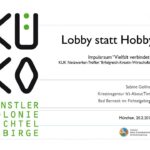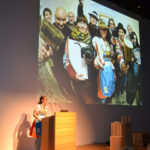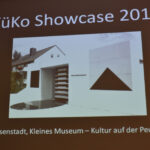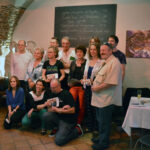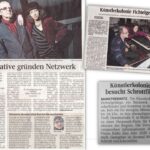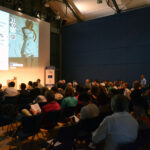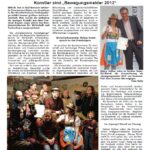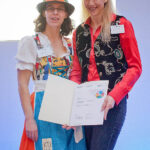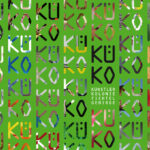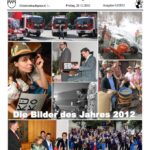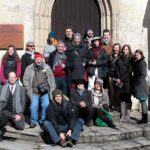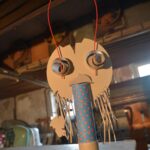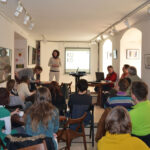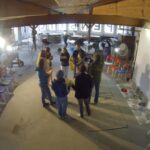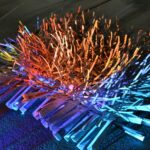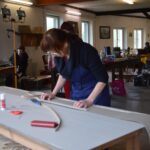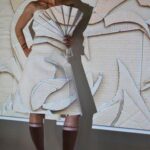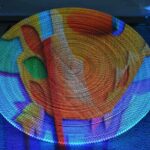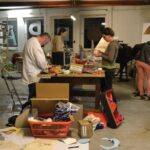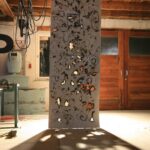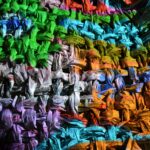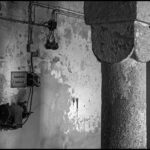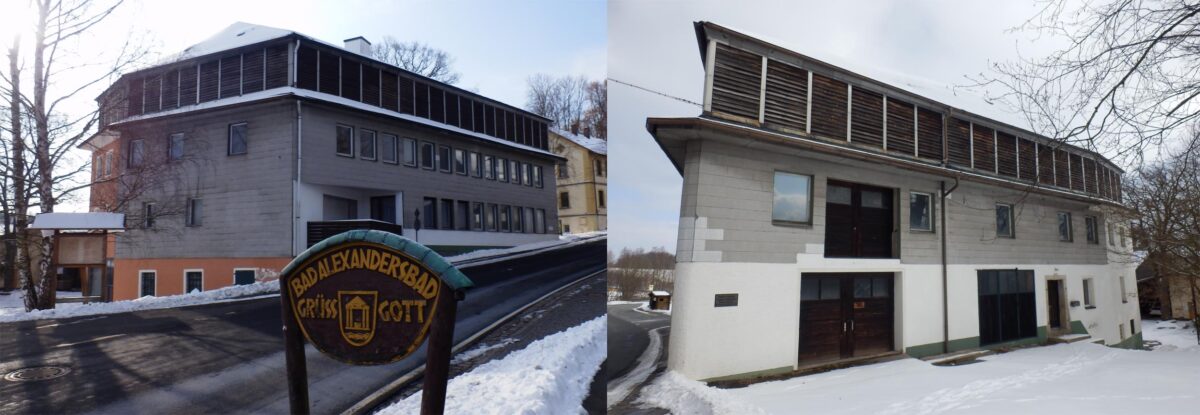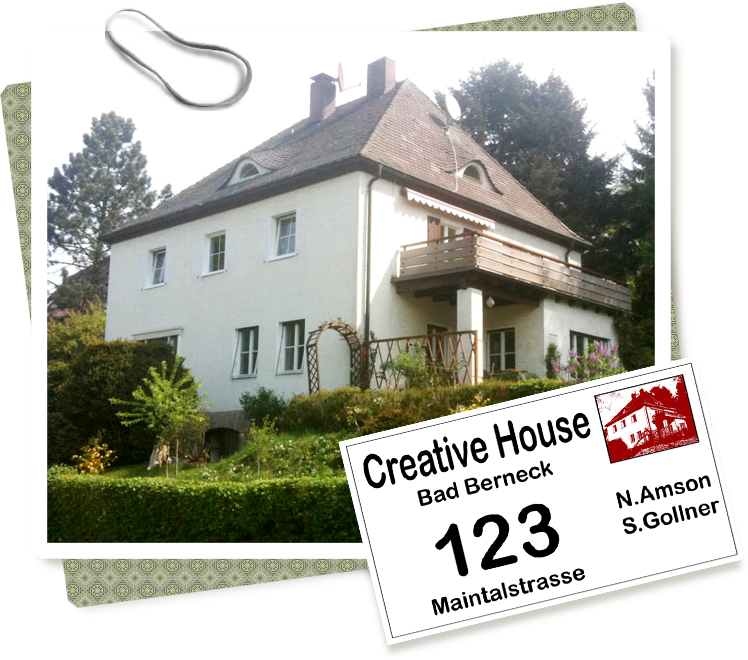
Kreativhouse
Kreativhouse is a temporary residence and work place for visiting artists from all over the world. Built in 1933, this house was used originally as a veterinary clinic. It is still called the ‘Schinzel-Villa’ by some, after the family who lived here first. Today, resident artists Sabine Gollner and Nigel Amson develop concepts and briefs and support the visiting artists in the production of their work. In this rural setting, far away from the cities, the invited artists create work that is specific to Bad Berneck and the region.
The tradition of artists staying in this building goes back a long way: in 1952, Herbert von Karajan stayed here while he conducted the now legendary version of ‘Tristan und Isolde’ at the Wagner Opera Festival in Bayreuth (see diary). Kreativhouse is also the seat of KüKo, the artists’ colony of the Fichtelgebirge. Several creatives of KüKo have contributed to QR-Tour: designer Marc Eichner, writers Susan Graunke and Harald Scholl, and calligrapher Andrea Wunderlich, just to mention a few (see Credits Page).
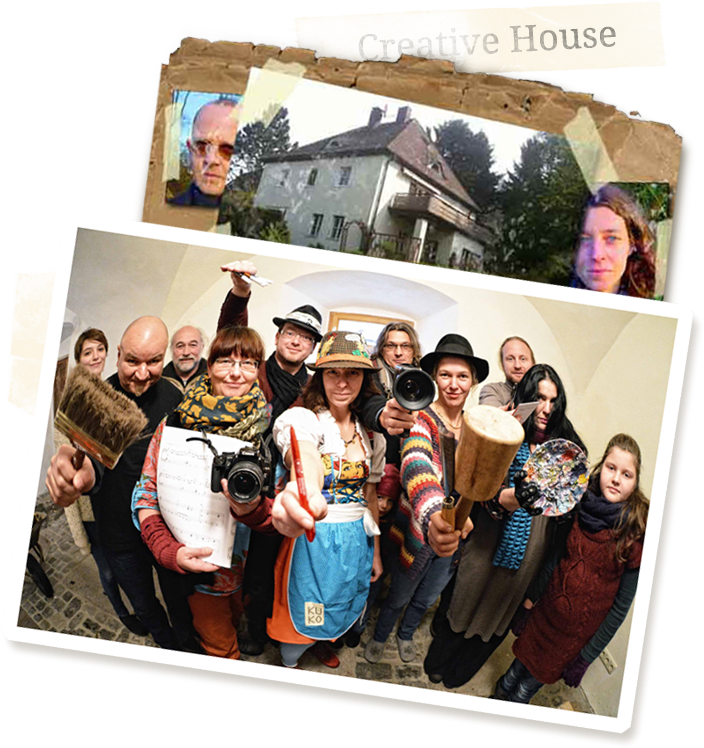
The QR Tour…
…was produced here in the Kreativhouse.
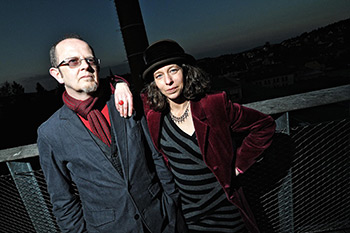
The team of Creative Agency “It’s About Time” consists of Nigel Amson and Sabine Gollner. They designed and developed the alternative travel guide “The QR-tour” in Bad Berneck for Bad Berneck.
The same team also founded the artists’ colony Fichtelgebirge (“KüKo”), which pools creative talent from the area. They used this talent resource to assist in creating the content for this unique project. In addition, visiting international artists shaped the project by their contributions as well.
Before Nigel Amson and Sabine Gollner of “It’s About Time” moved to Bad Berneck, they ran a multi-media company in Birmingham, England’s second largest city. There, they initiated many art projects and produced films for museums, galleries, town councils, charities and companies.
They moved to Bad Berneck in 2011 because they had fallen in love with this small town, the ‘Pearl of the Fichtelgebirge’. They found many of the once attractive buildings were closed or only open a few days a year, and wanted to make these places accessible in a digital way with a combined culture-tourism project.
A free, downloadable app (application) for tablet computers was chosen as the medium because rural areas such as Bad Berneck and Goldkronach sometimes only have patchy mobile reception.
The QR-Tour brings together information, photos, movies, stories and memories of the town from numerous sources. For the first time, through a unique multimedia experience on a tablet PC, visitors can experience not only the striking places of the town, the tourist attractions, but private stories and memories as well. The QR tour includes not only “standard” tourist information, but also provides the local point of view through interviews and reminiscences of the people who live here.
Flowers
I love living here in Bad Berneck – the location is perfect for us. A little urban, a little rural. We moved here from a large city, and this is exactly the kind of life quality we were looking for. Bad Berneck is a great place to live for a family with small children: forest and intact nature are on our doorstep. School, kindergarten and shops are all in walking distance. The infrastructure of the location is also very good for our company, as we are in the heart of Europe, well connected by rail and road to Munich, Berlin, Prague and more.
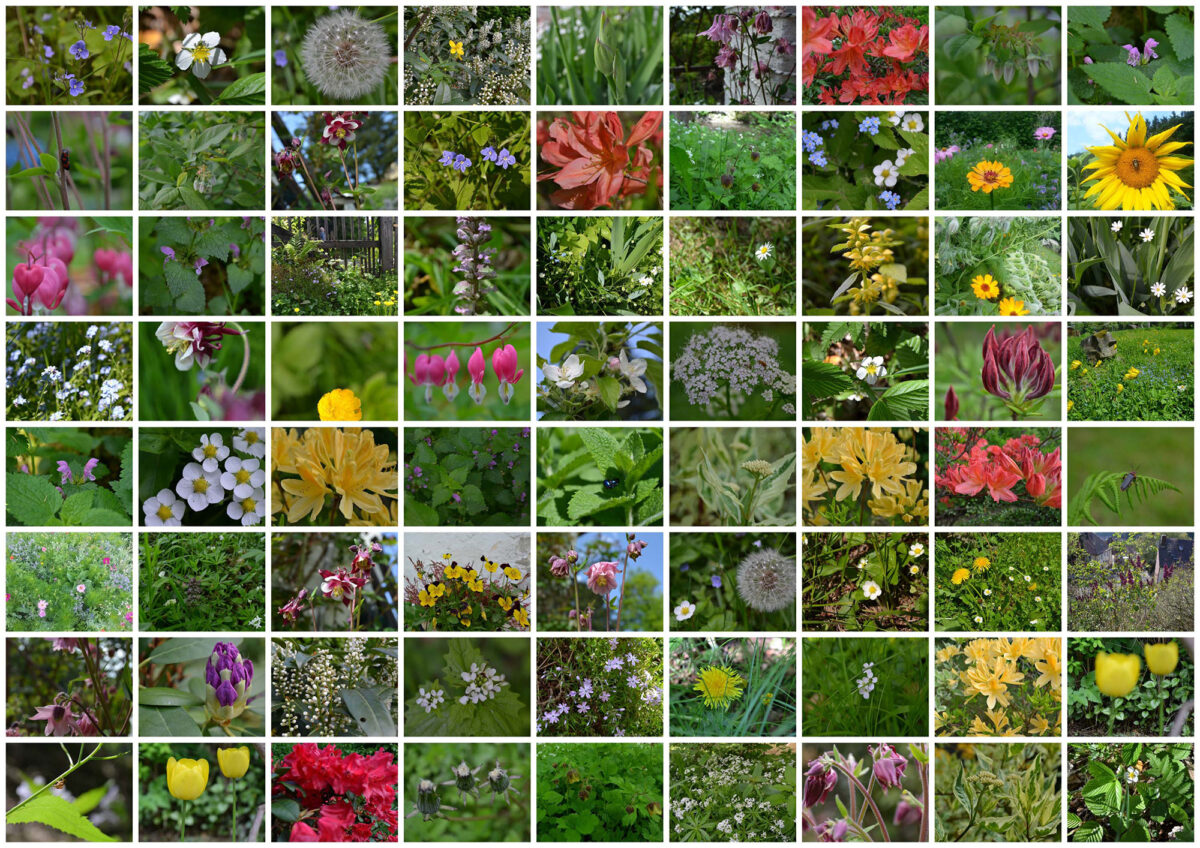
I can not decide which one of the seasons is my favourite here, they all have something to offer. From the beautiful lush greens of spring to the orange and golden autumnal forests, with cold winters and warm summers – it is great to live in a holiday destination.
For the QR-Tour I photographed some of the spring flowers in our garden at Kreativhouse.
Sabine Gollner
Artists in Residence
Kreativhouse has hosted two official artist residencies up to date. However, informally, many more creatives have visited, for example British filmmaker Mark Pressdee came to assess Bad Berneck as a possible location for his next short film. His last film ‘Titanic Love’ has received many international awards. The young Portuguese couple Barbara Sereno and Ricardo Garcez spent several weeks exploring the town with microphone and camera, creating illustrations and stories (see QR 5). David Checkley, an electrician and lighting artist from the UK, created work in response to the many derelict buildings in the town. (QR 1, 15, 22).
The first officially by KüKo invited ‘international artist in residence in the Fichtelgebirge’ was British sculptor Ivan Smith. His task was to mark 5 objects or places in Bad Berneck (and one additional one in Wunsiedel) to stimulate conversations with local people and visitors to the town about town regeneration and town development. KüKo members documented his work and engaged with people in the streets. Ivan Smith’s work set impulses to perceive places that are taken for granted or overlooked.
The second ‘international artist in residence in the Fichtelgebirge’ was British filmmaker and time-based artist Dominic Day, who, as a nature enthusiast, was invited to create filmic work for the QR-Tour about several locations in Bad Berneck. He was fascinated by natural phenomena such as the stars above the town or the creepy crawlies in the woods.
For many hours he sat high above the town, whether in the castle tower or near one of the many viewing platforms above Bad Berneck, and patiently waited for time to take its course. His films reveal the natural beauty of reality.
Ivan Smith Exhibition
To conclude Ivan Smith’s residency, photographic documentation of his five ‘fleeting installations’ were exhibited on big display boards at Kreativhouse, along with the comments by the public that were gathered on the locations. Postcards and ideas by children of the local Sebastian-Kneipp-school were also exhibited. In a school workshop, Ivan and Sabine had asked children to develop ideas for Bad Berneck 2020.
See QR 3, 8 and 11 for more of Ivan’s works. See also Credits for more about Ivan Smith.
Other Events of Kreativhouse
Exchange of ideas at cross-discipline networking events for creatives of the region – organized by Kreativhouse and KüKo
None of Them Knew They Were Robots (excerpt)
Pharmacist, aka Nigel Amson, wrote this track as a commentary on German bureaucracy and on Germany’s tendency to do the safe thing rather than take chances.
In his studio, Nigel recorded local musician Christopher Steinlein playing the Caisa, a tuned metal percussion instrument. He combined these samples with trip hop beats and voice synthesizer parts, added keybord sounds and a vocal sample of Sabine, saying, ‘You can never be sure of anything’ to complete the track.
Illustration by Ricardo Almeida Garcez.
None of Them Knew They Were Robots (excerpt) Pharmacist, aka Nigel Amson
Tip: Go to QR 24 and QR 15 to hear more compositions by Pharmacist.
Guest Bedroom Nr 1 – View North
An experimental collaboration: everyone who has stayed in Kreativhouse’s guest bedroom Nr 1 has had to take three photos without a tripod, at least once a day.
For over a year, photos were taken according to this concept of Dominic Day’s: Ricardo Garcez, Bárbara Sereno, Molly Amson Knight, Dominic Day – and Nigel Amson, when the room was empty.
Bad Berneck Illustrated
The most important points of interest, objects and people of Bad Berneck: an animated collage of hand-drawn illustrations by Bárbara Sereno for the QR-Tour.
Animated by Sabine Gollner and Bárbara Sereno
View from Above
Historical views of Maintalstrasse, as seen from QR 17 – The Green Pavilion
KüKo – The artists’ colony Fichtelgebirge
Originally founded in 2011 as a facebook-group, the Künstlerkolonie Fichtelgebirge established itself rapidly as a network and platform for creative practitioners in the rural area of Northern Bavaria. An association was formed in 2012. For its innovative approach to developing new business strategies, KüKo received the award ‘motion sensor – initiatives that move’ by the German Ministry of Economics. Artists and creative practitioners from all disciplines (from music to crafts to web design) meet and exchange ideas, develop projects, and aim to support regional development with their creativity.
KüKo Example Project: PappenStil
One of the focal interests of KüKo is to find innovative uses for the many abandoned buildings in the region. ‘PappenStil’ was KüKo’s first European funded project, a Czech – Bavarian collaboration in 2013, which not only saw artists from both sides of the border exchange ideas and work together, but also the conversion of a derelict part of a former cardboard and paper factory into a suitable group studio / rehearsal space for KüKo and their invited guests.
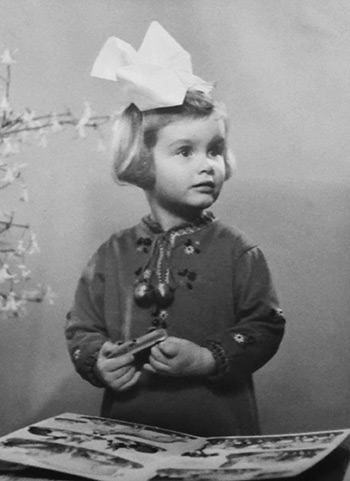
Elfriede Beutner (maiden name Schinzel)
Born 1935 in Berneck. Has been living in Munich for more than 50 years.
In 1938, my family moved into our newly built house in No. 123 Maintalstrasse. My father ran a veterinary practice on the lower floor and we lived upstairs: my parents and my 3 years younger sister, whom we lovingly called ‘Hannele’.
From time to time artists or workers of the Wagner Festival Bayreuth stayed with us.
Undeniably, the most prominent guest we had was the world-renowned conductor Herbert von Karajan. I was 15 years old back then and I remember well how I used to take him water for shaving in the mornings – back then, there was still no running water in the bedrooms.
Karajan loved the forest and liked to go walking after breakfast. One day, he came back with blackberry stains on his white trousers. I remember how my mother and the maid were frantically washing and drying them, because Karajan absolutely needed them in the afternoon for conducting his performance!
My mother stayed up late in the evenings until he returned after the opera, in order to open the door for him quickly and to let him in – he wanted to avoid the public, who always followed him around. He also sneaked out as quickly and secretly as possible from the Festspielhaus, too, because he didn’t want to be stopped by fans, and then he would race back to Bad Berneck in his Citroën.
He was always very kind to us children; sometimes we were allowed to travel with him to Bayreuth and we were always shaking because he drove so fast. His girlfriend at the time gathered just as much attention – she was the actress Margot Hielscher, who parked outside the house in her green Mercedes. We only realised who she was – an important singer and movie star –because the Bernecker residents were constantly chasing after her.
Karajan had his bedroom on the upper floor. This had originally been the generously proportioned room of my parents, but it was then rarely used. Towards the end of the war, my father had been recruited into the army as a cavalry vet to care for the troops’ horses, but, sadly, he never returned.
Karajan’s dinner was served in the largest room on the ground floor– he had his own cook.
Elfriede Beutner
Photo: Elfriede Schinzel, aged 4
Karajan – short info
Herbert von Karajan (1908 – 1989) was an Austrian conductor. He is generally regarded as one of the most famous and important conductors of the 20th century.
He was principal conductor of the Berlin Philharmonic for 35 years and guest conductor with many worldwide orchestras.
Karajan was a dominant figure in European classical music from the 1960s until his death in 1989. He was the top-selling classical music recording artist of all time, having sold an estimated 300 million records.
By becoming a member of the Nazi party, he was given freedom to continue to conduct and to travel all over the world during the war years.
In 1951 and 1952 he conducted at the Bayreuth Festspielhaus.
Photo: Karajan at Maintalstrasse 123
